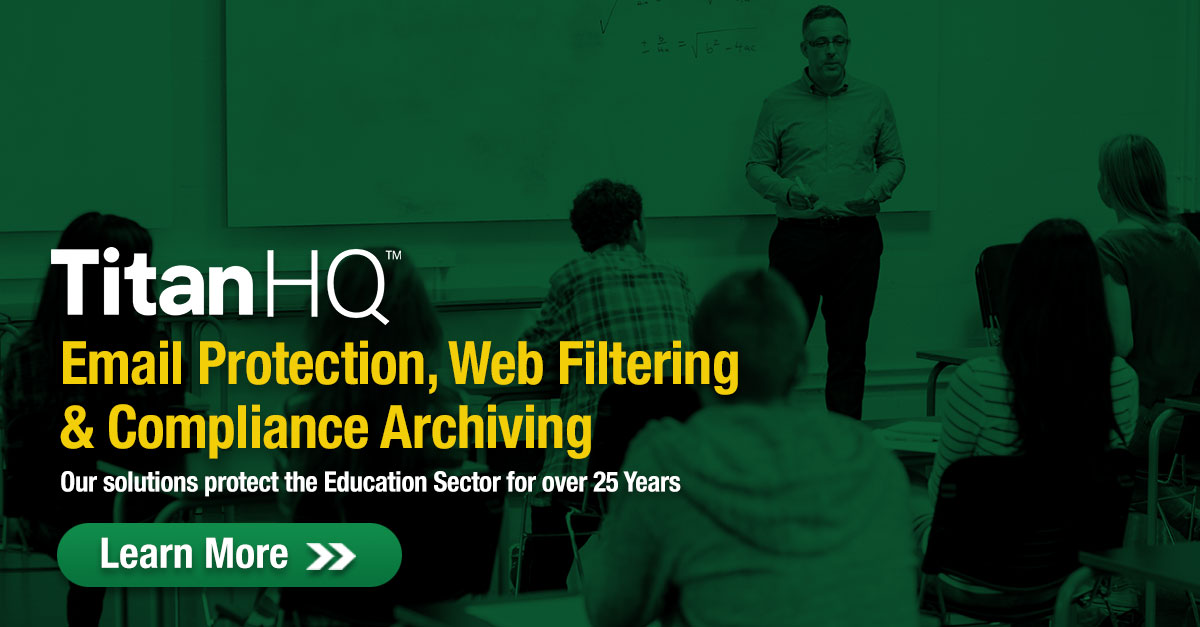
Cisco Umbrella Roaming Client- End-of-Life
Geraldine HuntThe imminent Cisco Umbrella Roaming Client End-of-Life has left many users uncertain about their next steps and exploring alternative DNS protection.
According to the K-12 Cybersecurity Resource Center, there were three times as many cyber incidents involving U.S. school districts in 2019 than the year prior. Then it got worse. Microsoft Security Intelligence reported that at one point in 2020, 61 percent of all malware encounters occurred in the K12 educational sector. There is absolutely no doubt that school districts need to focus on cybersecurity efforts. Below, are 5 key elements that should be a part of any K12 security strategy.
While retiring legacy technology may not seem to be security-related, the tendency to hold on to legacy hardware and software is one of the primary reasons why schools fall victim so easily to cybersecurity attacks. While the practice of using technology beyond its supported life cycle is often attributed to budgetary constraints, it’s also due to best-of-intention like attitudes. It is natural for teachers and administrators to put as many computing devices into the hands of students as possible. This often involves utilizing machines that can be well beyond their end-of-life. It would not be surprising to take a tour of K12 classrooms today and find Windows 7 machines or even a few XP machines in schools today. Unfortunately, vendors stop releasing security updates for newly discovered vulnerabilities for EOL technology. This is why old malware variants can still cause havoc today. While the intention of recycling outdated is certainly admirable, the increased exposure to malware and other cyber threats should override this practice if at all possible.
We don’t trust students to get behind the wheel of an automobile until they reach a certain age and maturity level. So why do schools continue to allow local admin rights to students that aren’t ready for that type of responsibility (there are plenty of adults not ready either). It’s easy for bad things to happen when students are assigned local admin privileges. When a user downloads malware or other types of malicious code it obtains the rights and privileges of that user. Because kids are kids, we know that they download games and despite being told not to. They are also fearless when it comes to clicking on things. Cybercriminals often entice younger users to download games and other applications that encase some type of malicious payload. While allotting local admin rights to all standard users makes it easy for internal IT to deploy machines, it also makes it easier for hackers to spread malware and viruses.
School administrators and educators clearly want to avoid any interruptions to the learning process. This again is a well-intentioned conviction. Too often, however, updates and patching are then postponed to a later time in order to not interfere with classroom time. This leads to hundreds or thousands of computers with unpatched vulnerabilities and security holes. While no one is advocating having students and staff reboot their Windows computers to install updates after every Patch Tuesday, updating systems must be a priority. Internal IT must have some way to manage the update process using a device management system such as Group Policy or an MDM solution.
Read Case Study ‘Deployment of WebTitan DNS Filtering in K-9 Schools’.
Email has been and continues to be the primary delivery system for malware and virus attacks. One could even say that it is impossible to protect any type of networked organization today without proper email security. This entails more than simple spam filtering. An education enterprise grade email security solution must not only have the ability to block spam, viruses, ransomware and embedded links to malicious websites, but incorporates data leak prevention policies as schools host a great deal of highly personal information about their student body and staff members. SpamTitan is a prime example of an email security system built for today’s educational institutions. It includes double antivirus protection as well as protection from zero-day attacks. SpamTitan was rated a 5-star solution by the users of Spiceworks. Read what customers have to say about us.
It is a fact that a majority of classroom learning occurs online today. Gone are the days of a stack of textbooks residing on desks. Because the internet is now the central hub of education content, an internet filtering solution is simply mandatory. In fact, any school systems that receives e-Rate funding is obligated to have some sort of content filtering solution in place. But content filtering is no longer enough when it comes to Internet filtering. What schools need today is an advanced DNS Security and DNS content filtering system such as WebTitan. The DNS Security system of WebTitan stops students from accessing malicious websites and internet based malware depositories. It monitors and identifies malicious threats in real time and strips internet packets of malware and malicious code, thus preserving the safety of the online learning process.
While it is imperative to perpetuate and stimulate the learning process within our schools, it is also essential to ensure that schools are protected from the growing mass of cyber threats out there. Incorporating these five key components into a K12 Security strategy will go a long way in ensuring that.
Protect K12 students with multi-layer security. Talk to a TitanHQ Security Expert to discover how we can protect your school's students and teachers. Contact us today.


The imminent Cisco Umbrella Roaming Client End-of-Life has left many users uncertain about their next steps and exploring alternative DNS protection.

School districts around the world over are issuing Chromebooks to students to help close equity, technology and homework gaps. Discover why and how to protect K12 students.

A 2024 report highlights the soaring popularity of QR codes, with a 47% yearly usage surge. However, cybercriminals are exploiting this trend, targeting unsuspecting users with scams and malware infections due to...
Sign-up for email updates...
